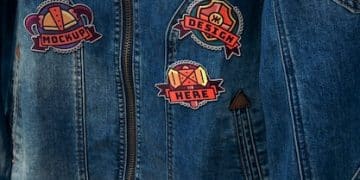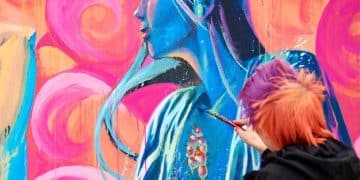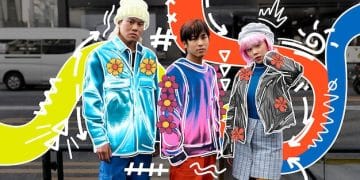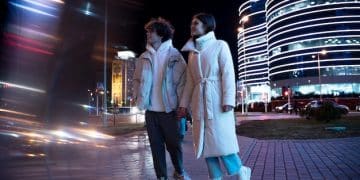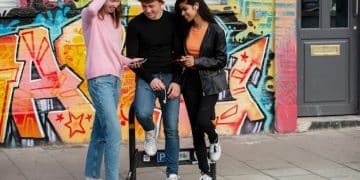Streetwear Graphic Design: Artists Defining Culture
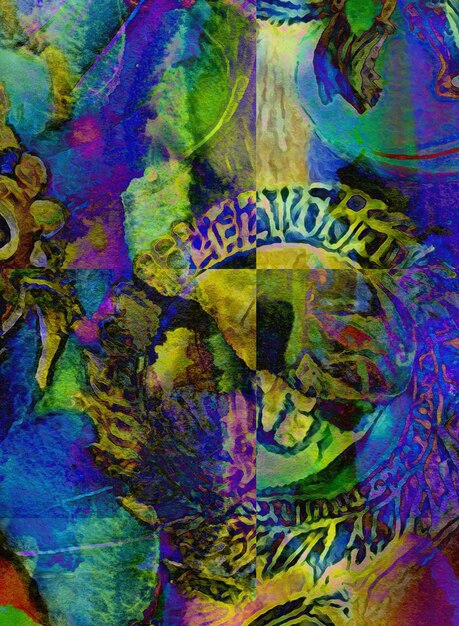
Explore how Streetwear Graphic Design: Unveiling the Visual Artists Shaping the Culture has become a pivotal force, transforming fashion through innovative visual storytelling and defining contemporary style.
For decades, fashion has reflected and influenced culture, but few realms embody this symbiotic relationship as profoundly as streetwear. It’s more than just clothes; it’s a statement, a lifestyle, a canvas for creativity. At the heart of this vibrant ecosystem lies Streetwear Graphic Design: Unveiling the Visual Artists Shaping the Culture, a crucial element that distinguishes a garment from a mere piece of fabric, transforming it into a powerful visual narrative.
The Canvas of Urban Expression: What is Streetwear Graphic Design?
Streetwear as a global phenomenon transcends simple clothing trends; it is a dynamic cultural movement born from the streets, skateboarding, hip-hop, and DIY aesthetics. At its core, streetwear thrives on individuality and authenticity. The visual language of this culture is predominantly conveyed through graphic design—bold logos, intricate illustrations, provocative slogans, and unique typographic arrangements that turn apparel into wearable art.
Unlike traditional fashion, which often dictates styles from designer runways, streetwear originates from the ground up, reflecting the raw energy and diverse perspectives of urban youth culture. This organic development imbues streetwear graphic design with a sense of rebellion and genuine expression. Each graphic tells a story, conveying messages, affiliations, and personal identities, making it an indispensable component of the streetwear ethos.
From Subculture to Mainstream: The Evolution of Streetwear Graphics
The journey of streetwear graphic design is intertwined with the evolution of skateboarding culture in the 1970s and 80s, where hand-drawn graphics on t-shirts and decks signified allegiance to local crews and brands. As hip-hop gained traction, its influence broadened the visual lexicon, incorporating elements of urban graffiti, political commentary, and aspirational imagery. The early adoption of screen printing allowed for rapid production and dissemination of these visual messages, solidifying graphic apparel as a staple.
- 1970s-80s: Subcultural Roots – Skate and surf brands like Stüssy and Thrasher pioneered logo-driven apparel.
- 1990s: Hip-Hop Infusion – Brands like FUBU and Wu-Wear popularized oversized graphics and iconic motifs.
- 2000s: Luxury Crossover – Japanese designers like Nigo (BAPE) brought exclusivity and elevated design to the forefront.
The dawn of the internet and social media accelerated this evolution, turning local trends into global phenomena. Designers and artists gained unprecedented platforms to showcase their work, fostering a vibrant ecosystem where creativity knows no bounds. This digital revolution not only democratized design but also amplified its reach, allowing graphic styles to rapidly disseminate and influence a global audience, transforming underground art into mainstream aspiration.
Today, streetwear graphic design is a complex interplay of art, commerce, and culture. It draws inspiration from a myriad of sources, including fine art, consumer culture, historical movements, and futuristic concepts. This eclectic fusion ensures that the visual identity of streetwear remains fresh, provocative, and constantly evolving, solidifying its place as a powerful force in contemporary fashion and art.
The Visionaries Behind the Visuals: Key Graphic Designers and Studios
Behind every iconic streetwear piece is a visionary graphic designer or a collaborative studio that understands the pulse of the culture. These artists are more than just illustrators; they are cultural commentators, trend forecasters, and visual storytellers who translate complex ideas into compelling visual narratives. Their work often dictates the direction of an entire season, influencing consumer behavior and cementing brand identities.
While many designers operate behind the scenes, their contributions are monumental. They are the architects of the visual experience, ensuring that each graphic resonates deeply with the target audience. Their ability to blend artistic skill with commercial acumen is what propels brands to cult status and keeps the streetwear movement at the cutting edge of fashion innovation.
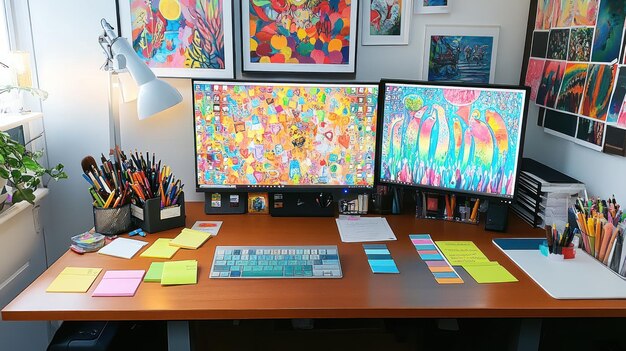
Pioneers and Modern Mavericks: Influential Figures
When discussing influential graphic designers in streetwear, names like Shawn Stüssy immediately come to mind. Starting with hand-screened t-shirts in the early 1980s, Stüssy’s distinctive graffiti-inspired signature became synonymous with West Coast surf and skate culture, laying the groundwork for a global empire. His work exemplified the raw, authentic ethos that defines streetwear.
- Nigo (BAPE): Masterminded camouflage prints and ape head motifs, creating a distinctive and highly covetable visual identity that blended luxury with street credibility.
- Shepard Fairey (OBEY): Evolved from guerrilla street art to a globally recognized brand, his iconic propaganda-art style graphics carry strong socio-political messages.
- KAWS (Brian Donnelly): Bridges the gap between contemporary art and consumer products, his “X” eyes and Companion figures are instantly recognizable across high fashion and streetwear.
These artists, among others, consistently push the boundaries of graphic design within streetwear. They experiment with new techniques, challenge conventional aesthetics, and draw inspiration from an eclectic range of sources, from high art to everyday urban elements. Their distinct styles have not only propelled their brands to fame but have also inspired countless emerging designers, shaping the visual landscape of the entire industry.
The impact of these designers extends beyond clothing; their graphics often become cultural touchstones, reflecting and influencing broader trends in art, music, and social commentary. They understand that a graphic is not just an image, but a statement, a conversation starter, and a piece of visual identity that allows wearers to express their alignment with certain values or aesthetics. This profound connection between design and identity is what fuels the enduring appeal of streetwear.
The Anatomy of a Streetwear Graphic: Techniques and Styles
A distinctive streetwear graphic is rarely a simple image; it’s a meticulously crafted visual statement that often employs a range of techniques and stylistic choices. The effectiveness of a design lies in its ability to capture attention, convey a message, and resonate with its audience, all while remaining true to the irreverent and unique spirit of streetwear. Understanding the common design elements reveals the complexity and artistry involved.
From bold typography to intricate illustrations, the visual language spoken by streetwear embodies a fusion of influences. Artists often blend traditional artistic practices with digital manipulation, creating graphics that are both aesthetically striking and conceptually rich. The choice of technique impacts not only the appearance but also the tactile experience of the garment, further enhancing its appeal.
Signature Elements: Typography, Illustration, and Iconography
Typography plays a critical role in streetwear. Unlike mere text, the chosen font, size, and arrangement of letters often become the primary graphic element, conveying attitude and branding. Bold, experimental fonts, often custom-made, deliver powerful visual impact. Illustrations range from highly detailed, hand-drawn artworks to abstract, minimalistic designs, each serving a specific narrative purpose.
- Bold Typography: Often serves as the primary visual element, making strong statements or showcasing brand names with unique flair.
- Gritty Textures and Distressed Effects: Mimic the worn, authentic feel of street art or vintage apparel, adding character and depth.
- Pop Culture References: Subtly or overtly integrate nods to movies, music, or iconic figures, forging immediate connections with the audience.
The use of iconography is equally important. Brands often develop unique symbols, mascots, or recurring motifs that become instantly recognizable, fostering a sense of community and exclusivity. These icons are more than just visual identifiers; they embody the brand’s philosophy and build a visual shorthand with their fanbase. The ability to create an enduring icon is a hallmark of truly impactful graphic design within this sphere.
Color palettes in streetwear graphic design are diverse, ranging from monochromatic schemes that exude sophistication to vibrant, clashing hues that demand attention. The application of these elements is not arbitrary; every decision, from the choice of ink to the placement on the garment, contributes to the overall aesthetic and narrative of the piece. This holistic approach to design ensures that each product is a cohesive, deliberate work of art.
The Cultural Impact: Beyond Clothing
The influence of Streetwear Graphic Design: Unveiling the Visual Artists Shaping the Culture extends far beyond merely adorning garments. It has become a significant visual language that communicates beliefs, affiliations, and artistic movements, shaping cultural dialogues and influencing various other creative industries. Streetwear graphics are, in essence, visual manifestos worn by individuals.
These graphics serve as a medium for social commentary, political statements, and often, rebellion against established norms. By wearing a specific graphic, an individual aligns themselves with a particular message or community, making streetwear a powerful tool for self-expression and cultural identification. This ability to convey complex ideas visually is what gives streetwear graphics their profound impact.
Streetwear Graphics as Social and Political Commentary
Many streetwear brands leverage their graphic designs to address pressing social and political issues. Whether it’s through overt slogans or subtle allegories, these designs spark conversations and raise awareness. Public School’s minimalist yet impactful graphics, or the provocative imagery from brands like Supreme, often serve as a mirror reflecting societal concerns or a megaphone amplifying marginalized voices.
- Activism Through Apparel: Graphics often carry messages supporting social justice, environmental causes, or specific political stances.
- Youth Voice Amplification: Provides a platform for younger generations to express dissent, creativity, and unique worldviews.
- Brand Identity as a Movement: Brands like BAPE or Palace cultivate a cult following where their graphics act as badges of belonging to a distinct global subculture.
The immediate visibility of clothing transforms wearers into walking billboards for ideas, fostering a dynamic and accessible form of public discourse. This democratic aspect of streetwear, where anyone can participate in and contribute to the visual narrative, differentiates it from more traditional, top-down fashion movements. Graphic designers are not just artists; they are facilitators of public dialogue.
Moreover, the aesthetic of streetwear graphics has permeated other creative fields. Elements of streetwear design are now visible in mainstream advertising, interior design, fine art, and even architecture. This cross-pollination demonstrates the pervasive influence of streetwear’s visual language, solidifying its status as a leading cultural definer rather than just a fleeting trend. The lines between street art, graphic design, and high fashion continue to blur, creating innovative new expressions.
Collaboration and Crossovers: Expanding the Graphic Universe
A defining characteristic of contemporary streetwear, and particularly its graphic design component, is the prevalence of collaborations and crossovers. This phenomenon sees streetwear brands partnering with artists, musicians, other fashion labels, and even non-fashion entities to create limited-edition collections. These collaborations inject new perspectives and expand the creative boundaries of graphic design within the streetwear ecosystem.
Collaborations are not merely marketing tactics; they are often genuine artistic dialogues that result in truly unique and covetable pieces. They allow designers to experiment with new aesthetics, reach broader audiences, and celebrate the shared visions of diverse creative minds. The scarcity and exclusivity associated with these drops only heighten their allure, making the graphics even more sought after.
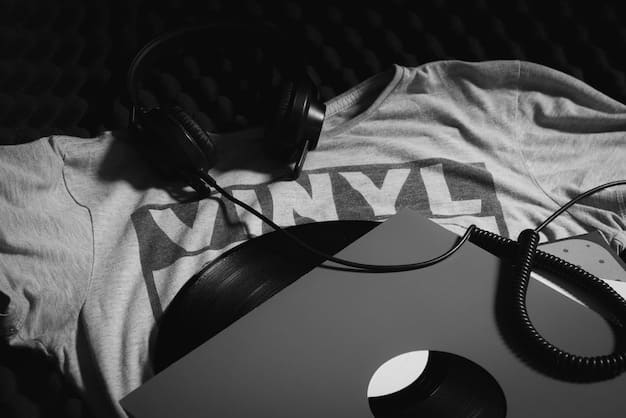
The Synergy of Artistic Partnerships
One of the most notable aspects of streetwear collaborations is the opportunity for graphic designers to fuse their unique styles with the established aesthetics of another brand or artist. This often results in a visual blend that is greater than the sum of its parts. For example, Supreme’s long history of collaborations with diverse artists, from Jeff Koons to Takashi Murakami, has yielded iconic graphics that push artistic boundaries while retaining Supreme’s signature edge.
- Artist Collaborations: Bring fine art aesthetics into a wearable format, often leading to limited-edition, highly collectible items.
- Brand-on-Brand Partnerships: Fuse distinct visual identities, creating hybrid designs that appeal to both fanbases.
- Pop Culture Tie-ins: Leverage nostalgic or current cultural phenomena to create graphics that resonate deeply with consumer memories and trends.
These partnerships are not limited to the traditional art world; they extend to music, sports, and even food industries. Brands like Kith have successfully merged their streetwear sensibilities with gourmet food concepts, creating unexpected yet highly popular graphic designs that celebrate a fusion of lifestyles. Such unconventional collaborations underscore the versatility and expansive nature of streetwear graphic design as a creative force.
The success of these crossovers often hinges on the graphic designer’s ability to respectfully integrate different brand languages while creating something entirely new and exciting. This requires a deep understanding of each entity’s visual DNA and the foresight to predict how these elements will coalesce into a compelling final product. The dynamic nature of collaborations ensures that streetwear graphic design remains a vibrant and constantly evolving field, always pushing the envelope.
The Future of Streetwear Graphics: Trends and Innovations
As streetwear continues its evolution from subculture to a major force in global fashion, its graphic design component is also constantly adapting and innovating. The future promises even greater integration of technology, sustainability, and increasingly personalized forms of visual expression. Graphic designers in this space are at the forefront of these shifts, shaping what the next generation of wearable art will look like.
The rapid pace of technological advancement, coupled with a growing social consciousness, is driving significant changes in how graphics are conceived, produced, and consumed. This ensures that the field remains dynamic and challenging, offering exciting opportunities for creative and impactful design work. The focus is increasingly on designs that are not only visually appealing but also carry deeper meaning and purpose.
Technological Advancements and Sustainable Design
Digital printing techniques are becoming more sophisticated, allowing for higher resolution, broader color gamuts, and greater design complexity than ever before. This opens up possibilities for intricate patterns and photorealistic graphics that were once impossible. Furthermore, augmented reality (AR) and virtual reality (VR) are beginning to influence graphic design, enabling interactive elements that transform static designs into dynamic experiences when viewed through a smartphone or headset.
- AI-Generated Design: Exploring the potential of artificial intelligence to assist in concept generation, pattern creation, and even unique graphic iterations.
- Personalized Graphics: Advancements in on-demand printing could allow consumers to customize unique graphics, fostering greater individuality.
- Sustainable Materials and Inks: A growing emphasis on eco-friendly production methods, from organic cotton to water-based inks, influencing design choices.
Sustainability is also emerging as a critical trend. Graphic designers are increasingly considering the environmental impact of their work, focusing on designs that utilize eco-friendly inks, sustainable materials, and production processes that minimize waste. This shift reflects a broader consumer demand for ethical fashion, pushing designers to innovate within responsible parameters without compromising on creative vision or aesthetic appeal. The challenge lies in balancing artistic expression with environmental responsibility, a challenge designers are eager to meet.
The rise of digital fashion and NFTs also hints at new avenues for graphic designers. Creating graphics for virtual apparel or digital collectibles offers a novel canvas, free from the constraints of physical production. This opens up an entirely new dimension for visual artistry, allowing designers to explore hyper-realistic or fantastical concepts that might not translate to physical garments. The future of streetwear graphic design is multi-faceted, embracing both tangible and intangible forms of expression, constantly pushing the boundaries of what is possible within the realm of wearable art.
| Key Point | Brief Description |
|---|---|
| 🎨 Visual Identity | Streetwear graphic design forms the core visual language, conveying messages, affiliations, and personal identity. |
| 🌟 Influential Artists | Pioneering designers like Shawn Stüssy and Nigo have shaped the aesthetic and cultural impact of the genre. |
| 🛠️ Design Techniques | Emphasizes bold typography, intricate illustrations, unique iconography, and strategic use of color. |
| 🚀 Future Trends | Anticipates integration of AI, sustainable practices, and expansion into digital fashion (NFTs, AR/VR experiences). |
Frequently Asked Questions About Streetwear Graphic Design
▼
A strong streetwear graphic is defined by its originality, ability to convey a specific message or aesthetic, and resonance with its target audience. It often incorporates bold typography, unique illustrations, and cultural references, ensuring it stands out and communicates identity effectively. Authenticity and visual impact are key.
▼
Technology has revolutionized streetwear graphic design through advanced digital printing, enabling more intricate details and vibrant colors. Digital platforms and social media have also provided designers with unparalleled reach, allowing rapid dissemination of trends and fostering global creative communities. AI and AR/VR are emerging as future influences.
▼
Legendary graphic artists include Shawn Stüssy, who pioneered the surf-skate aesthetic, and Nigo of BAPE, known for his iconic camouflage patterns. Shepard Fairey (OBEY) brought political messaging to the forefront, while KAWS merged contemporary art with streetwear, creating highly sought-after figures and graphics.
▼
Collaborations are crucial in streetwear, as they allow designers to blend diverse artistic styles and reach new audiences. These partnerships, often between brands, artists, or cultural figures, result in unique, limited-edition graphics that push creative boundaries and generate significant cultural hype, often becoming highly collectible.
▼
Yes, sustainability is an increasing focus. Designers are opting for eco-friendly inks, sustainable materials, and ethical production processes to minimize environmental impact. This shift reflects growing consumer awareness and a desire for more responsible practices within the fashion industry, influencing both design choices and brand ethos.
Conclusion
Streetwear Graphic Design: Unveiling the Visual Artists Shaping the Culture stands as a testament to the enduring power of visual communication within fashion. It’s a field where artists are not just designing clothes, but crafting cultural commentary, forging identity, and sparking movements. From its rebellious roots to its current global influence, the essence of streetwear lies in its fearless embrace of graphic innovation. As technology advances and creativity continues to flourish, the canvas of streetwear graphic design will undoubtedly continue to evolve, offering new perspectives and redefining what it means to wear your art on your sleeve. The artists shaping this culture are more than designers; they are integral storytellers in the urban narrative, continually pushing the boundaries of expression and connection.
